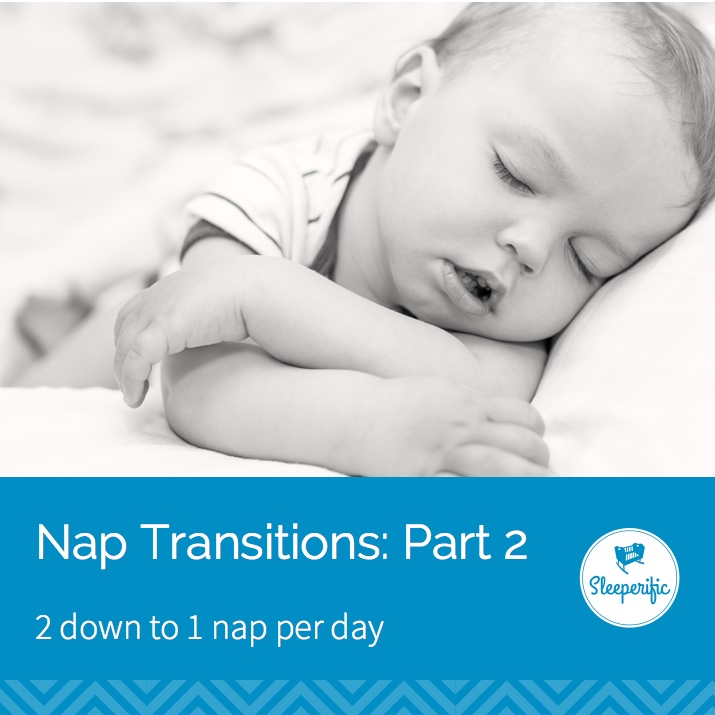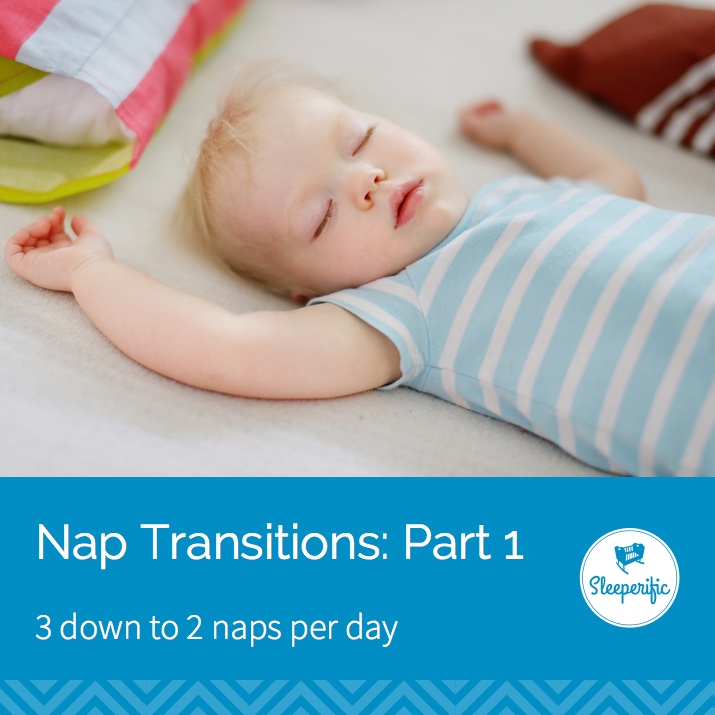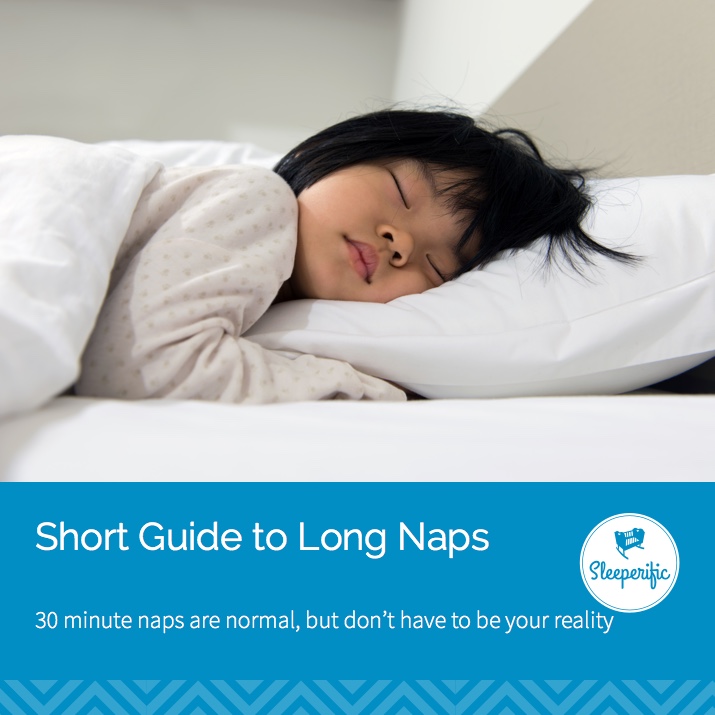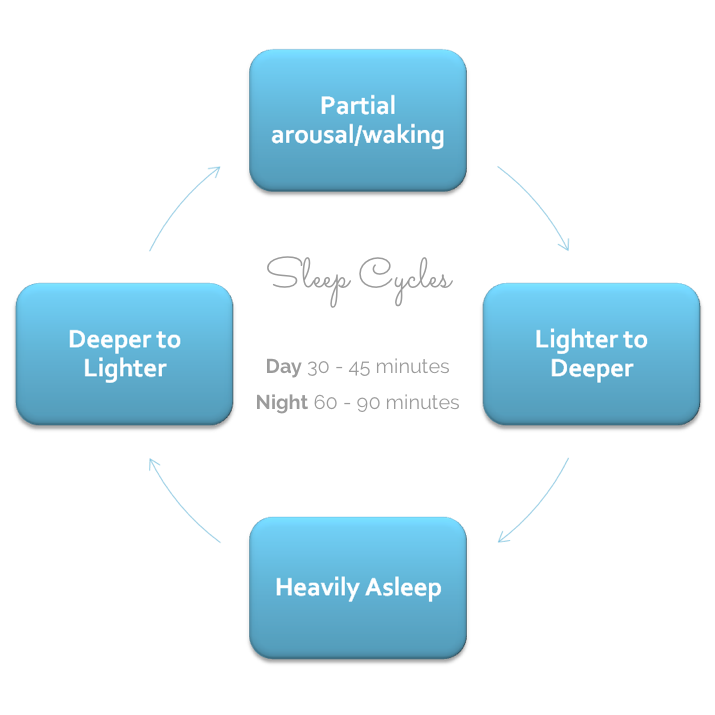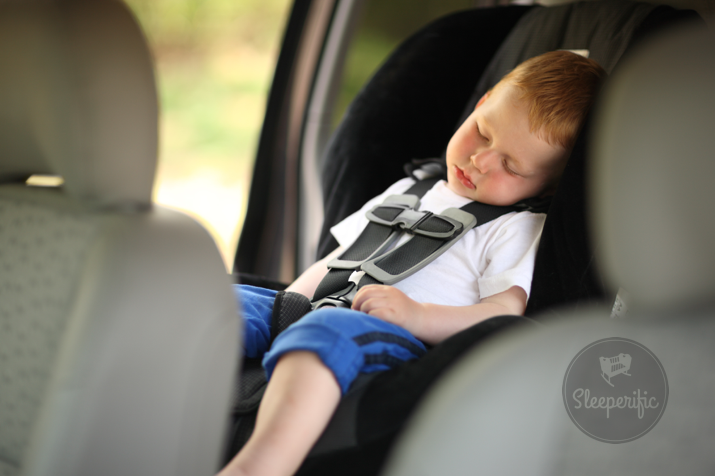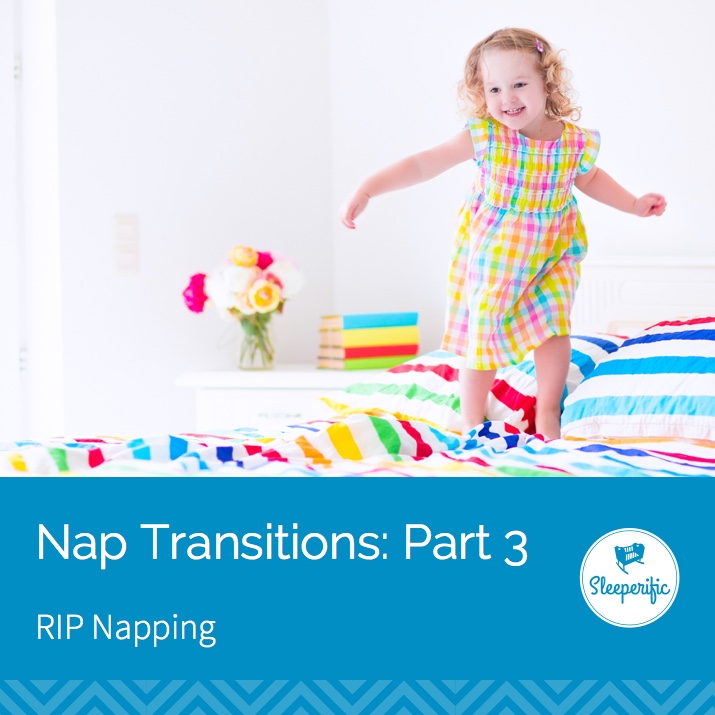
Dropping naps is a major milestone for any family.
The transition from 3 down to 2 naps is relatively easy to contend with. 2 down to 1 and 1 down to 0 – those transitions can be challenging for even the best of sleepers. I always encourage parents to protect those naps for as long as they can and transition only when absolutely necessary. If you’ve done everything to can to prolong their nap in a daily sleep schedule, you will have to an easier transition. Absolute readiness is key to success.
The transition from 1 to no nap per day is likely to be between 3 and 4 years of age. Although there’s lots of variation – some showing signs of readiness for transition as early as 2 years old, while others are willing to hold onto their second nap until closer to 5 years old. If your child generally seems well rested, is following a schedule that works for your family, I’m not concerned about the number of hours a child allocates to naps and night sleep. Simply getting an adequate quantity of sleep is most important.
Protect The Nap
Try to hold onto the nap by:
- trying out alternate timing (slightly earlier nap time, slightly later nap time)
- capping the length (waking your child slightly earlier, by a certain time or a certain quantity of sleep, so as not to impact bedtime)
- dropping the nap power struggle (offer Quiet Time!)
- Adjusting bedtime slightly later
- Ensuring physical activity, preferably outdoors. Each hour of inactivity delays bedtime by approximately 3 minutes!
Readiness for No Nap
Signs indicating readiness for a transition to no naps in the day:
- 3+ years of age
- Playing (or protesting) through a nap
- The nap begins to interfere with night sleep (likely long latency to sleep)
If your child is younger than 3 years, it may be worth trying to hold onto that nap. There are MANY significant cognitive leaps between their 2nd and 3rd birthdays. They might be inconsistent with day sleep, but continue to offer it. Many children under 3 will have some days where they may not nap, but that’s not a reason to take rest out of their daily schedule. It’s not unusual to have phases where naps are irregular. But keeping naps until at least age 3 has shown real benefits in areas of emotional control (hello meltdowns!) and problem solving.
No Nap Schedule

Bedtimes are likely to be reflective of your child’s particular sleep needs, along with their wake times. During a period of transition, you may find you need to keep bedtime cautiously early – just as their bodies adjust to bridging those long periods of wakefulness. I always recommend parents keep quiet time when transitioning away from naps. It gives your child the option to snooze if they need it, but as importantly, they have a chance to foster some independent playing skills, while giving their care provider a much needed break.
Whenever there is a transition, the most important thing to remember is that the QUANTITY of sleep does not change dramatically. Just the ALLOCATION of the sleep is going to be adjusting. It’s very likely that a child who is adjusting to no midday snooze is going to need a very early bedtime to compensate for their missed sleep.
If your afternoons, sans nap, resemble something like this, you might need to think about reintroducing nap time:
http://www.youtube.com/watch?v=59NWIOvPqZE
Here’s a handy little chart for approximating the quantity of naps for each age group.
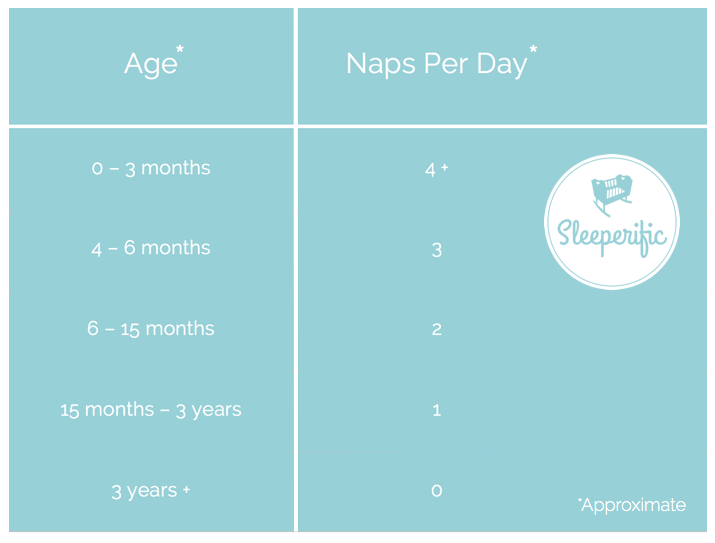
xxoo
Krista
About the author:
 |
Krista is a mother of 3 (+1 dog who believes she’s people), a wife to a wonderful husband, and the owner and founder of Sleeperific. Even though she’s been in the sleep consulting biz for 4 years, she still gets excited when she’s hired by a sleepy family. |

